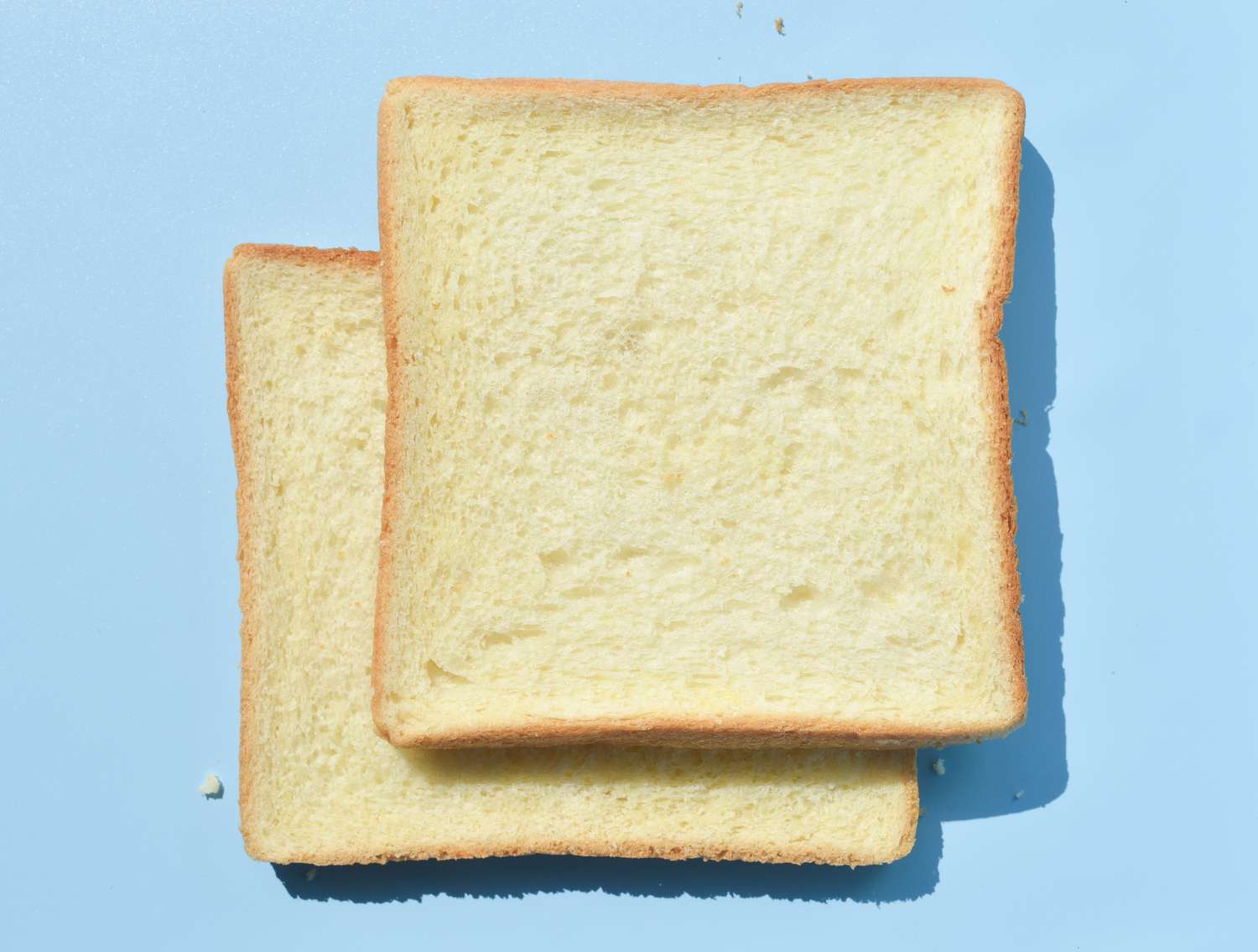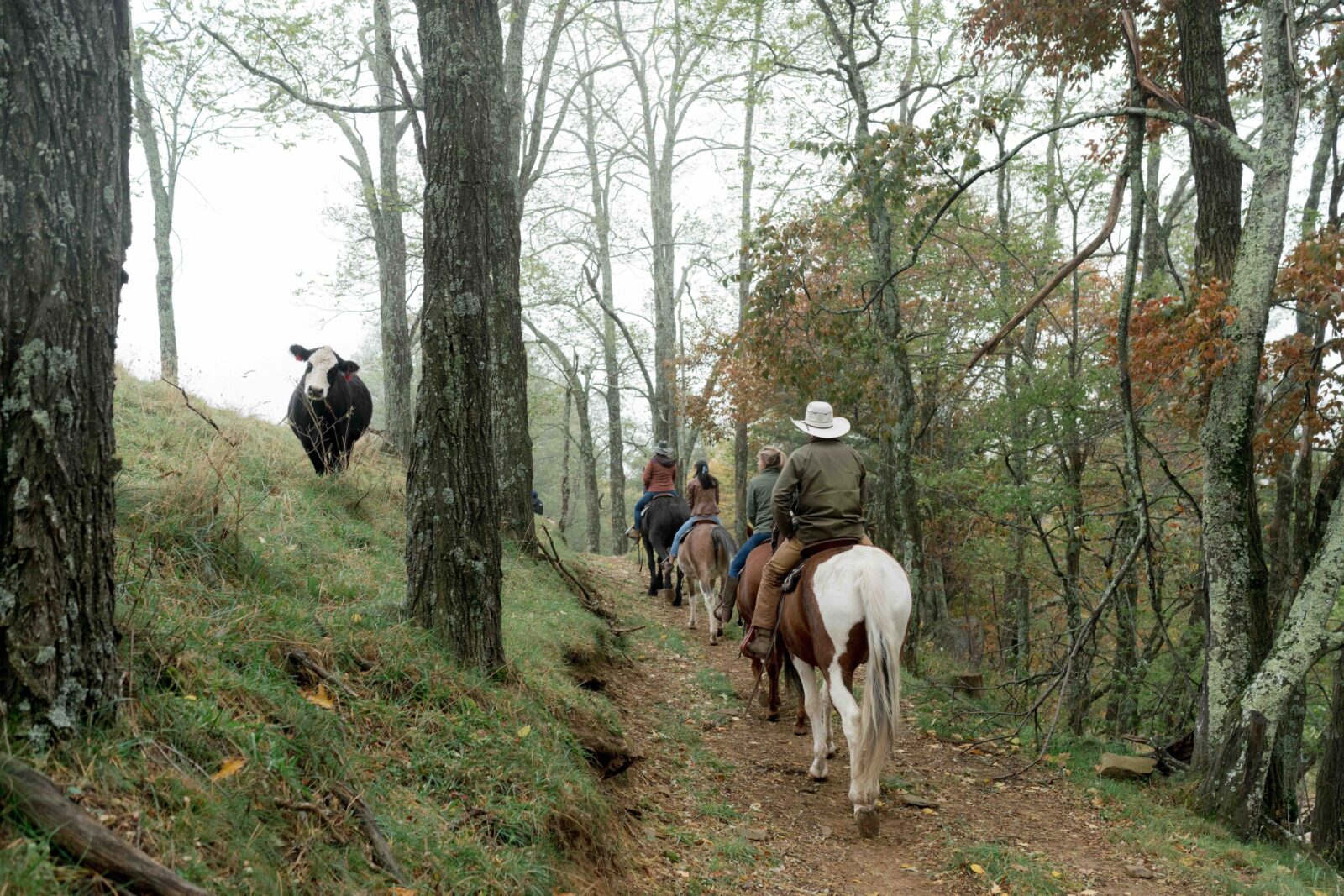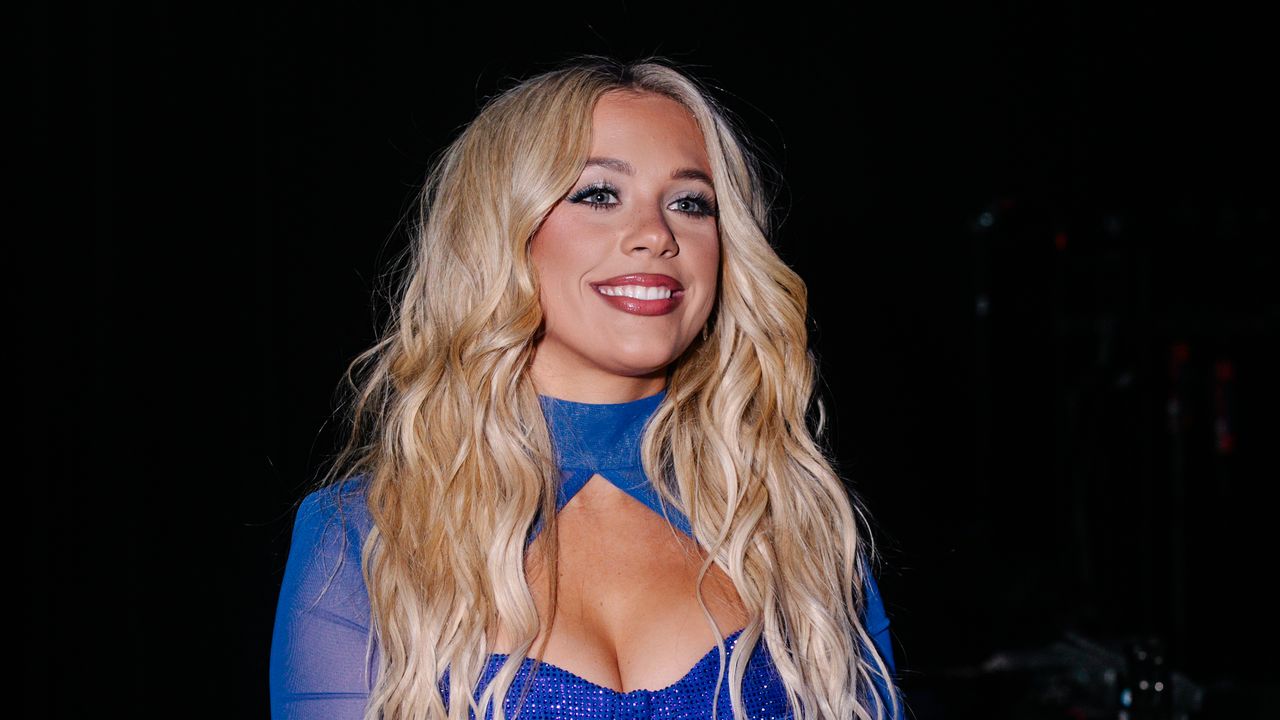
Five of the Bahamas’ Best Bonefish Lodges
Any saltwater fly angler will tell you that the Bahamas mean bonefish. The subtropical archipelago of some seven hundred islands ranks among the world’s best places to chase what author Zane Grey famously dubbed “the gray ghost of the flats.” Elusive and well-camouflaged, bonefish thrive in the warm shallows, where they forage for abundant prey—mainly crustaceans, mollusks, and worms—on the countless sand and turtle-grass flats, and in tidal creeks that meander through expansive mangroves. Anglers prize bonefish for their speed and powerful runs, and they’re highly valued in the Bahamas as a catch-and-release species. The gray ghost is even featured on the nation’s ten-cent coin.
The thrill of sight-casting to bonefish with a fly rod has drawn anglers to the archipelago for decades, attracting such greats as Joe Brooks, Stu Apte, and Lefty Kreh. Legendary Bahamian guides played a major role in ushering the sport of bonefishing into the modern era as they developed innovative fly patterns and techniques. “Crazy Charlie” Smith’s namesake fly, invented about fifty years ago, is now a staple for bonefish anglers everywhere.
Bonefish lodges are spread throughout the Bahamas, where anglers can also target permit and tarpon in certain areas, along with barracuda, mutton snapper, and triggerfish. While bonefish can be caught year-round, the fishing ramps up in the spring (March, April, May, and June are all prime months) and then again in the fall, with winter providing shots at larger fish. Spanning from the north of the archipelago to the distant south, and ranging from luxurious retreats to far-flung hideaways, these five proven lodges offer a variety of angling experiences and access to many of the best fishing grounds.
A bonefish on a saltwater flat.
East End Lodge
Grand Bahama Island
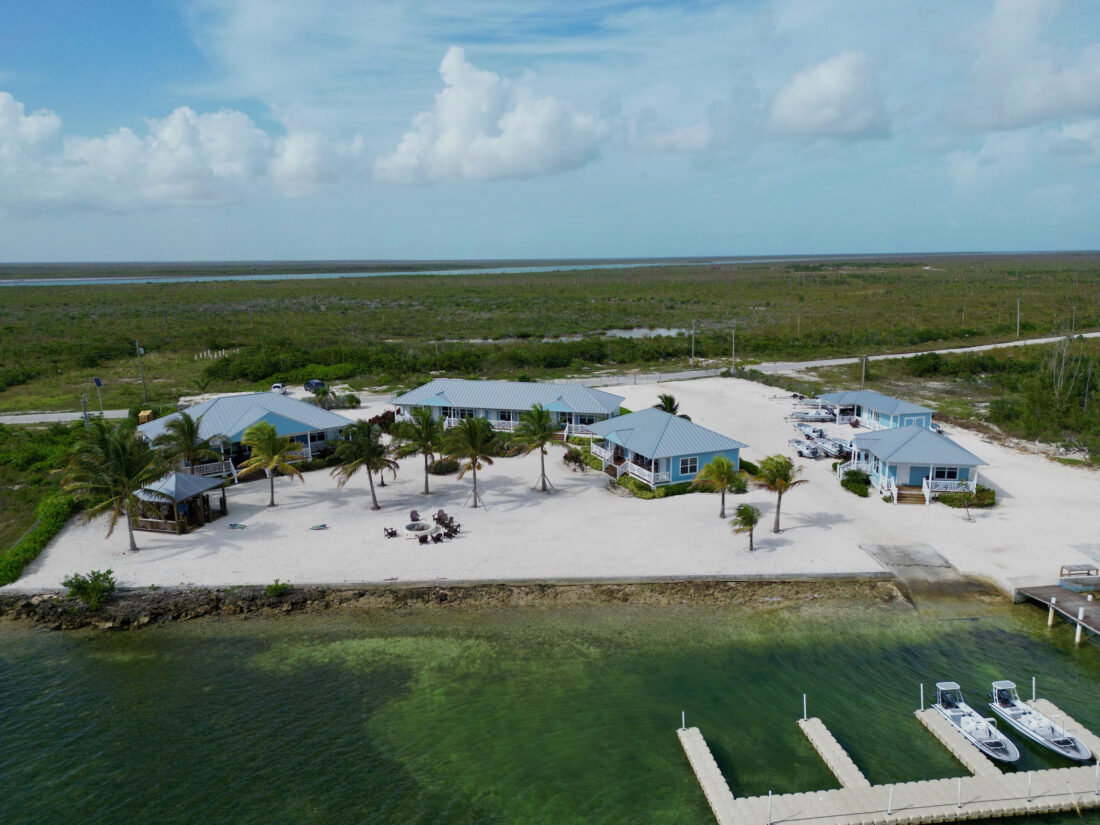
East End Lodge in McLean’s Town.
About sixty-five miles from Florida’s West Palm Beach, Grand Bahama is the closest major Bahamian island to the United States. A forty-five-minute drive from the airport in Freeport brings you to the famed East End, an area rich with angling history and known for big bonefish. This highly productive fishery is defined by the five natural waterways, called “bights,” that cut through the island’s eastern horn, creating a series of cays lined with numerous creeks and flats. The unique topography provides anglers with plenty of fishing options and places to escape the wind.
“Because of the way our tides flow through the horn, we can fish the best tides throughout the day just by changing locations,” says Cecil Leathen, head guide and partner at East End Lodge. “This sets us apart from many other fisheries and gives our anglers more chances to be successful.”
Rebuilt after Hurricane Dorian devastated Grand Bahama in 2019, East End Lodge reopened in 2021 with modern updates. The charming lodge sits on a three-acre waterfront property in McLean’s Town and can host up to fourteen anglers. A fleet of Dolphin skiffs is conveniently docked just steps from the spacious guest cottages with views of the ocean. In the evening, post up at the well-stocked bar or swap tales around the fire-pit over local Sands beer as you take in the sunset.
The Delphi Club
Great Abaco Island
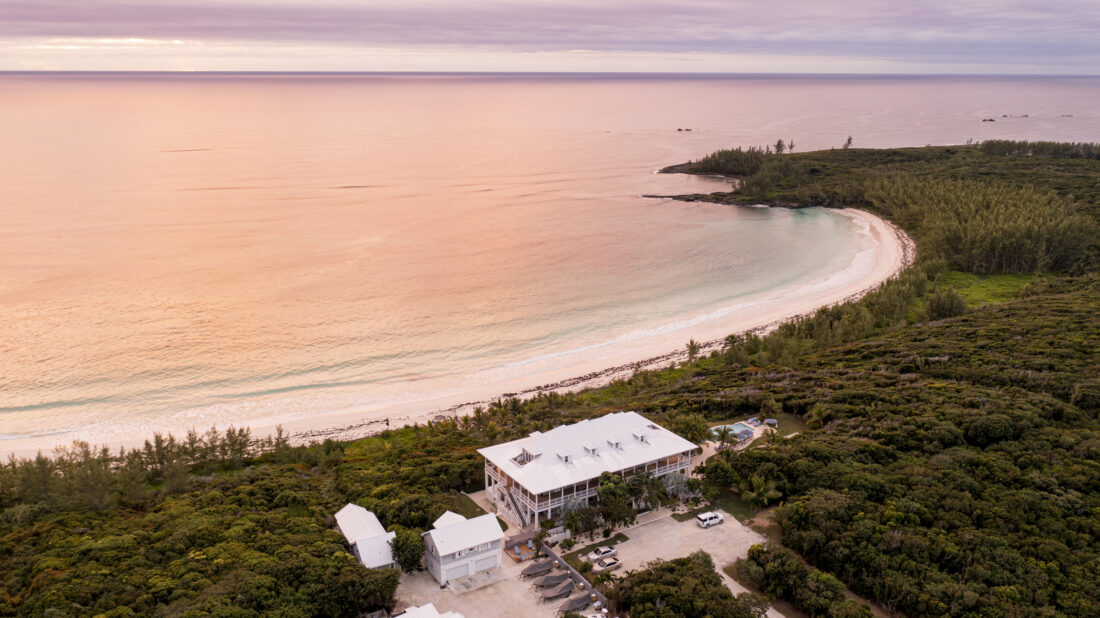
The Delphi Club on the beach of Rolling Harbour.
Great Abaco is Grand Bahama’s neighbor to the east and the largest island in the Abacos, a 120-mile-long chain of islands and cays. Overlooking Rolling Harbour’s secluded beach, the elegant Delphi Club is well-positioned to access the diverse fishing settings found along Great Abaco’s east and west coasts and southern end. These include Cherokee Sound, where anglers can stalk bonefish by foot on white sand, and the famous Marls, a three-hundred-square-mile patchwork of mangroves, creeks, and flats protected within a national park.
“The Marls is a one-of-a-kind bonefishing habitat,” says Delphi Club guide Tony Russell. “Its massive expanse of fishing wilderness makes it possible to explore thousands of untouched shorelines. Fish are plentiful and friendly with lots of opportunities to catch tailing bonefish and never see another skiff as far as the eye can see.”
Designed in the British colonial style, the lodge features wrap-around verandas, a library bar, and an adjacent great room for dining. It can accommodate sixteen guests, and anglers and vacationers alike will enjoy its serene setting, complete with an infinity pool, lush gardens, and easy beach access.
Soul Fly Lodge
The Berry Islands
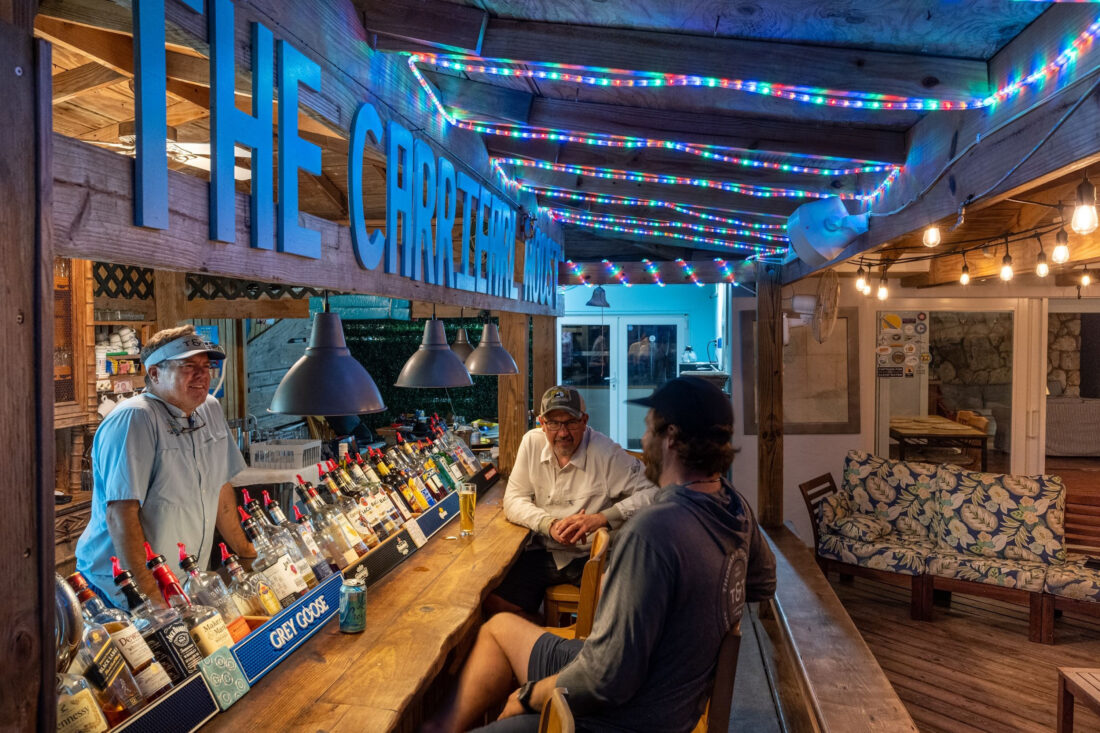
The Soul Fly Lodge bar and restaurant.
Soul Fly is the gateway to a flats fishery that was difficult for most anglers to access prior to the lodge’s opening in 2021 due to the Berry Islands’ remoteness and lack of fly-fishing operations. Aptly nicknamed “the fishbowl of the Bahamas,” the Berrys host an incredible array of species, attracting big-game fishermen as well as bonefishers. Soul Fly sits on Great Harbour Cay, which is within striking distance of vast white-sand flats perfectly suited to wading. When the tides aren’t optimal for bonefish, you can chase triggerfish, mutton snapper, and feisty barracuda. The lodge holds eight anglers, with a restaurant and bar, a swimming pool, and an idyllic beach accessed via a palm-lined path. At the fly-tying station, you can whip up Crazy Charlies and Merkins to cast at the big bones and permit that inhabit this unspoiled fishery.
“The Berry Island flats have a unique combination of sheltered, prey-filled habitat coupled with quick access to deep, cool water,” says Kyle Schaefer, Soul Fly’s founder and co-owner. “This combination of habitat helps mature bonefish and permit thrive in the tidal currents that connect these environs.”
Mangrove Cay Club
Andros Island
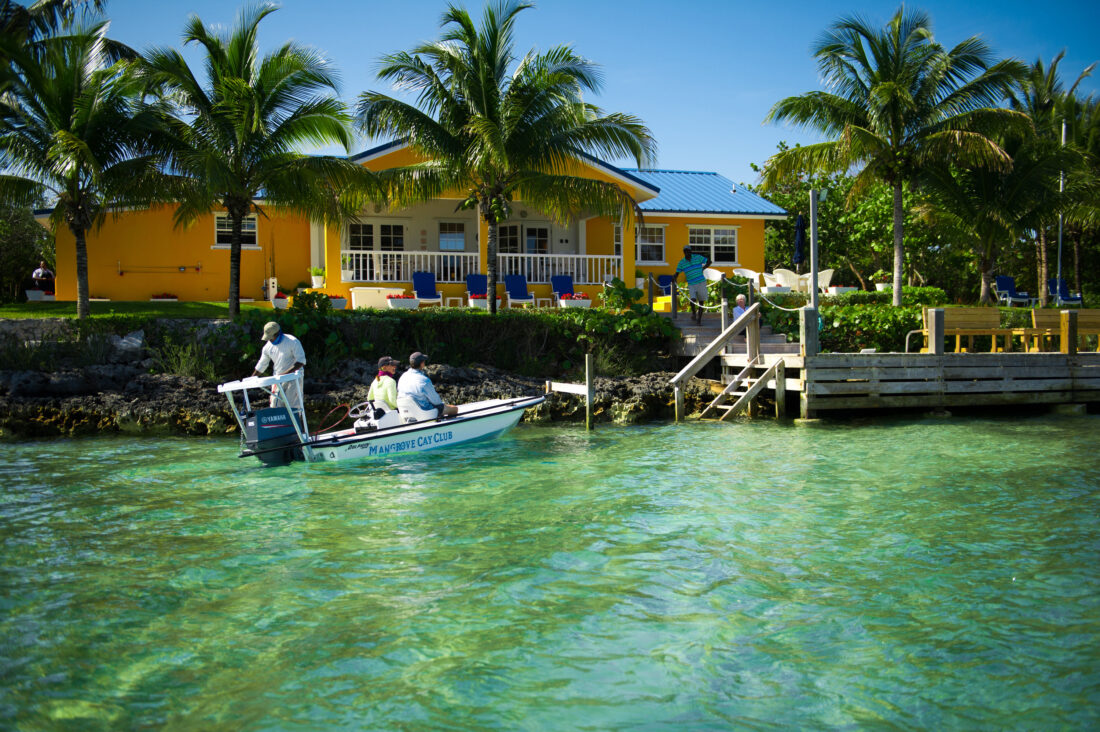
The Mangrove Cay Club’s wooden dock.
Known as the Bonefish Capital of the World, Andros Island is actually an archipelago composed of three main islands—North Andros, Mangrove Cay, and South Andros—and many small islets and cays. Three massive waterways called the Bights of Andros cut across it and are filled with flats and lagoons teeming with bonefish. The well-appointed Mangrove Cay Club is centrally located on the Middle Bight, providing convenient access to the best bonefishing Andros has to offer. “Our experienced guides can take anglers to flats mere minutes from the lodge and to the fabled West Side of Andros, home to trophy bonefish,” says Liz Bain, Mangrove Cay Club’s manager and part-owner.
The Bights and the West Side have soft bottoms, so you’ll fish them from a skiff. If you like to wade, you can stalk bonefish on the hard sand flats along Andros’s eastern shores and southwest tip. Mangrove Cay Club can accommodate sixteen anglers in its four bungalows, each divided into two suites with high cypress ceilings. When you get back from the flats, cool off with a dip in the pool and drinks on your private porch facing the Middle Bight.
Crooked Island Lodge
Crooked Island
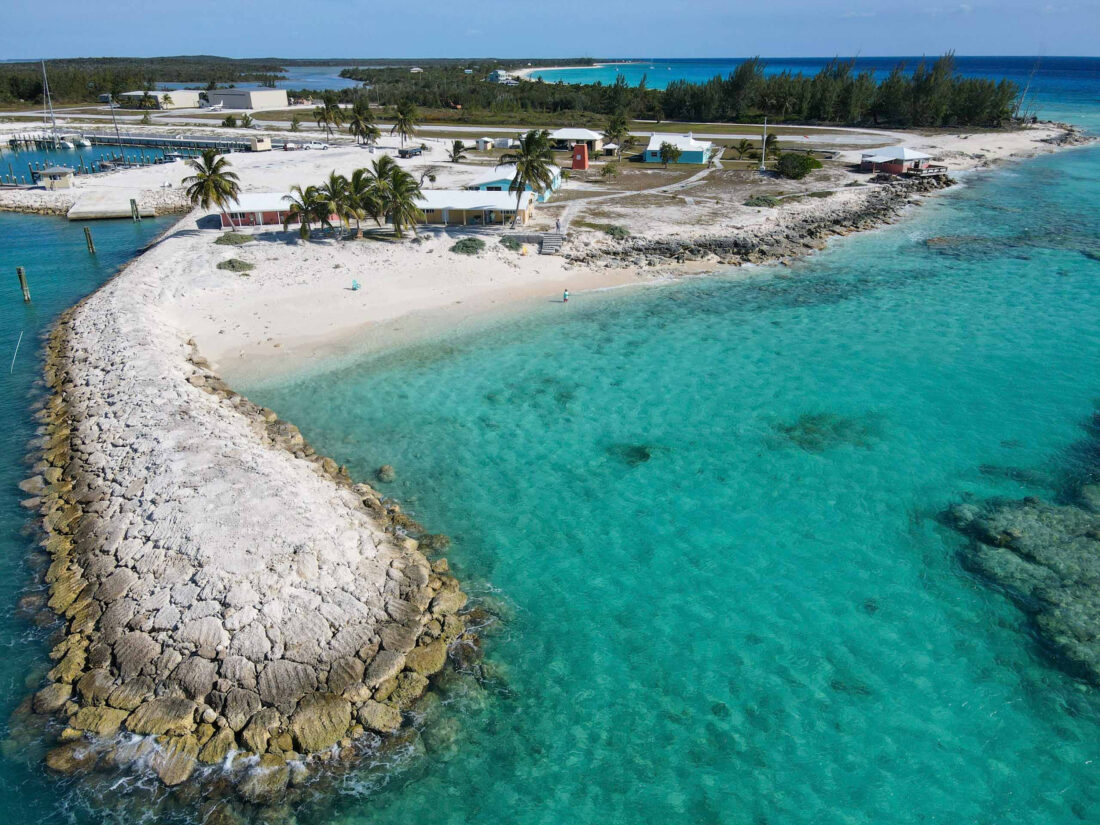
Crooked Island Lodge, in the Bahamas’ southeastern corner.
If you thirst for adventure and solitude, look no further than Crooked Island, home to one of the Bahamas’ most isolated and least pressured flats fisheries. Located a couple hundred miles southeast of Andros, Crooked Island lies along the route Columbus followed on his 1492 voyage. He named it “Isabella” in honor of Spain’s queen. Lined with beaches, the picturesque island is surrounded by turquoise waters, coral reefs, and pristine flats where you can cast to the gray ghost with no other anglers in sight.
“Nestled in the remote southern Bahamas, Crooked Island Lodge is ideally situated to avoid the harsh winter cold fronts while being adjacent to the Bight of Acklins,” says Ian Davis, co-owner of the U.S.-based outfitter Yellow Dog Flyfishing, which arranges trips around the world for bonefish and more. “This prime location allows the guides to position anglers in optimal tides throughout the day, so anglers can wade or fish from the skiff at any time. While bonefish are the primary target species, the guide team has developed one of the most consistent permit fisheries in the Bahamas.”
Hosting up to twelve anglers, the lodge sits at the historic Pittstown Point, overlooking the Bird Rock Lighthouse, and has a restaurant, full-service marina, and private airstrip. You can also get there by flying commercially into nearby Colonel Hill Airport. In addition to bonefish and permit, Crooked Island Lodge offers top-notch offshore fishing for marlin, mahi, tuna, and wahoo.





